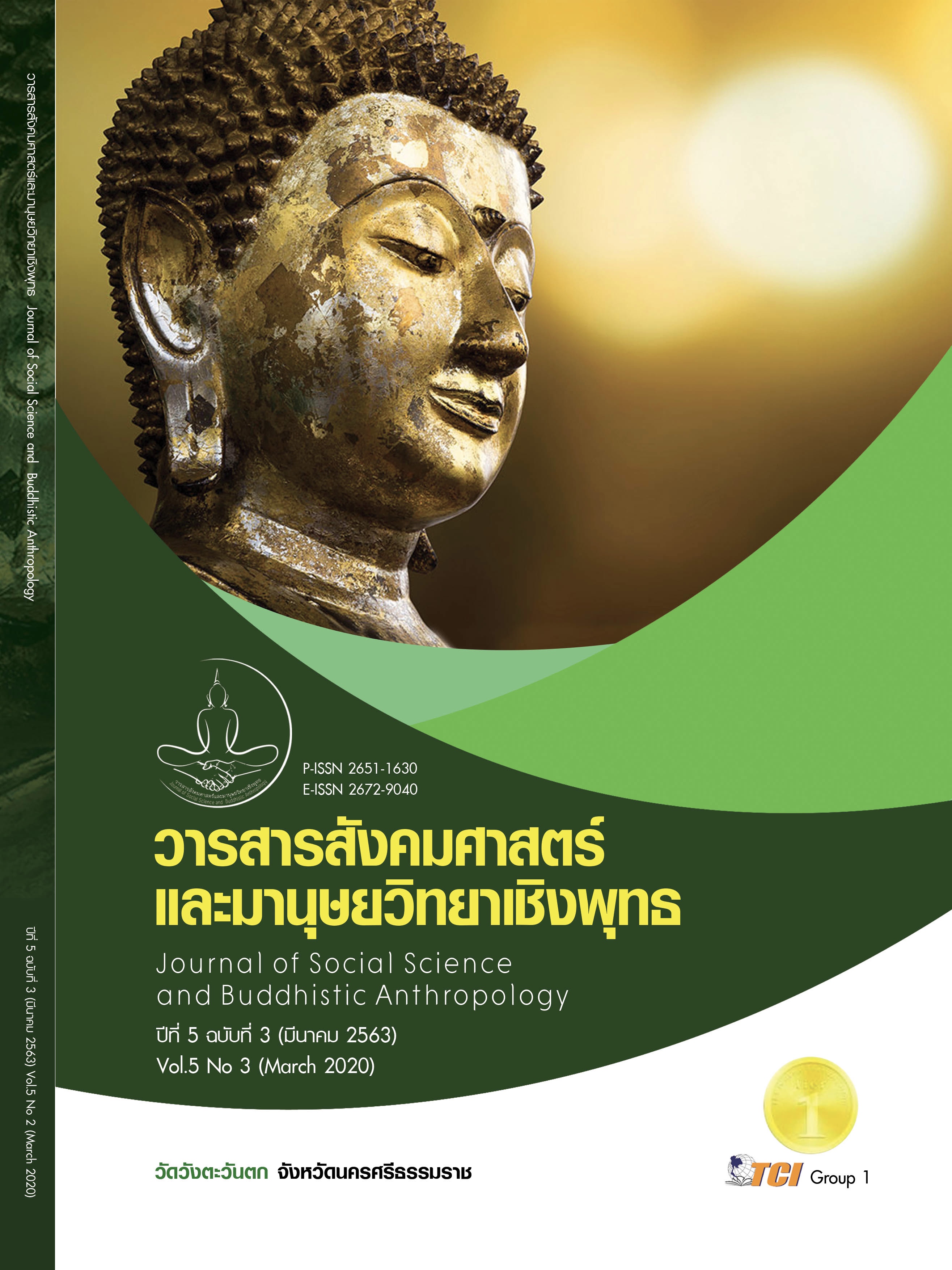ตัวแบบการตัดสินใจที่มีอิทธิพลต่อการเลือกใช้พลังงานแสงอาทิตย์ ของสถานประกอบการในเขตกรุงเทพมหานครและปริมณฑล
คำสำคัญ:
ตัวแบบการตัดสินใจ, การเลือกใช้, พลังงานแสงอาทิตย์, ผลการดำเนินงานบทคัดย่อ
การวิจัยครั้งนี้มีวัตถุประสงค์เพื่อศึกษา 1) การยอมรับและกระบวนการตัดสินใจเลือกใช้พลังงานแสงอาทิตย์ของสถานประกอบการ 2) ผลการดำเนินงานของสถานประกอบการที่เลือกใช้พลังงานแสงอาทิตย์ 3) ตรวจสอบโมเดลการตัดสินใจการเลือกใช้พลังงานแสงอาทิตย์ของสถานประกอบการ ในเขตกรุงเทพมหานครและปริมณฑล โดยใช้ระเบียบวิธีการวิจัยแบบผสานระหว่างการวิจัยเชิงปริมาณและการวิจัยเชิงคุณภาพ ประชากรที่ศึกษา ได้แก่ สถานประกอบการที่จดทะเบียนนิติบุคคลกับกรมพัฒนาธุรกิจการค้า กระทรวงพาณิชย์ กลุ่มตัวอย่าง คือ ผู้บริหาร/ผู้จัดการของสถานประกอบการ คำนวณหาขนาดกลุ่มตัวอย่างโดยใช้สูตรของ Taro Yamane ได้จำนวน 400 คน ใช้วิธีเลือกแบบเฉพาะเจาะจง โดยใช้แบบสอบถามในการเก็บรวบรวมข้อมูลและ การวิจัยเชิงคุณภาพ ผู้ให้ข้อมูลที่สำคัญคือนักวิชาการที่เกี่ยวข้องกับระบบไฟฟ้าจากพลังงานแสงอาทิตย์ จำนวน 9 คน โดยการสัมภาษณ์เชิงลึก เครื่องมือที่ใช้เป็นแบบสัมภาษณ์ สถิติที่ใช้ในการวิเคราะห์ข้อมูล ได้แก่ สถิติเชิงพรรณนาและสถิติอ้างอิง ซึ่งประกอบด้วย ค่าร้อยละ ค่าเฉลี่ย ค่าเบี่ยงเบนมาตรฐาน และการวิเคราะห์การถดถอยพหุคูณ (Multiple Regression) ผลการวิจัยพบว่า เมื่อพิจารณาจากค่าสัมประสิทธิ์สหสัมพันธ์พหุคูณ ด้วยเทคนิคแบบขั้นตอน มาตรฐานในการทำนาย (S.E. = 0.380) จากตัวแปรทำนายทั้งหมด 10 ตัว พบว่ามีตัวแปรที่เข้าสู่สมการ 6 ตัวแปร โดยเรียงลำดับความสำคัญได้ดังนี้ ความเป็นไปได้ที่จะซื้อในอนาคต (β = 0.227) นโยบายของรัฐ (β = 0.192) ความสนใจในผลิตภัณฑ์ (β = 0.174) ความคาดหวังในการใช้งาน (β = 0.172) ความรู้ในผลิตภัณฑ์ (β = 0.137) อิทธิพลทางสังคม (β = 0.117) โดยรวมกันทำนายความแปรปรวนของผลประกอบการของสถานประกอบการในกรุงเทพมหานครและปริมณฑลได้ร้อยละ 76.50 อย่างมีนัยสำคัญทางสถิติที่ระดับ 0.05 (R2 = 0.765)
เอกสารอ้างอิง
กรมพัฒนาธุรกิจการค้า กระทรวงพาณิชย์. (2561). สถานประกอบการที่จดทะเบียนนิติบุคคลกับ กรมพัฒนาธุรกิจการค้า กระทรวงพาณิชย์. เรียกใช้เมื่อ 29 มกราคม 2561 จาก https://www.dbd.go.th/more_news.php?cid=71
คณะกรรมการกำกับกิจการพลังงาน. (2557). แผนพัฒนากำลังผลิตไฟฟ้าของประเทศ พ.ศ.2555-2573. เรียกใช้เมื่อ 29 มกราคม 2561 จาก https://www.erc.or.th/
ไชยยันต์ ถาวระวรณ. (2555). ศึกษาพลังงานทดแทนสำหรับงานอุตสาหกรรมในอนาคต. วารสารการศึกษาและการพัฒนาสังคม มหาวิทยาลัยบูรพา, 8(2), 10-14.
นภดล พันธุ์พานิช. (2561). กระบวนการเชิงกลยุทธ์ของธุรกิจระบบอัตโนมัติที่อำนวยความสะดวกแก่ผู้สูงอายุของวิสาหกิจขนาดกลางและขนาดย่อมสำหรับการเปลี่ยนแปลงสู่สังคมผู้สูงอายุในประเทศไทย. วารสารวิจัยมนุษย์ศาสตร์และสังคมศาสตร์ มหาวิทยาลัยเวสเทิร์น, 4(2), 170-185.
พัชรินทร์ แซ่จัน. (2559). การประยุกต์ใช้พลังงานแสงอาทิตย์สำหรับขับเคลื่อนระบบทำความเย็นแบบดูดซึมในประเทศไทย. วารสารวิชาการพระจอมเกล้าพระนครเหนือ, 26(3), 533-541.
วราภรณ์ แห้วเพ็ชร. (2555). การศึกษาความเป็นไปได้ของเซลล์แสงอาทิตย์ชนิดฟิล์มบาง คอปเปอร์ อินเดียมแกลเลียม ไดซิลิไนด์ (CIGS) สำหรับอาคารชุดพักอาศัยในประเทศไทย. ใน วิทยานิพนธ์วิศวกรรมศาสตรมหาบัณฑิต สาขาเทคโนโลยีการจัดการพลังงานและสิ่งแวดล้อม. มหาวิทยาลัยธรรมศาสตร์.
วิชิต มาลาเวช. (2556). ชุดสาธิตการผลิตกระแสไฟฟ้าด้วยระบบพลงังานทดแทนแบบผสมผสาน. นครศรีธรรมราช: มหาวิทยาลัยราชภัฏนครศรีธรรมราช.
Philip Kotler et al. (2012). Marketing Management 12th Edition. Edinburgh Gate: Pearson Education Limited.
Kaplan & Norton. (2004). STRATEGY MAPS. Massachusetts: Harvard Business School Press.
Özsungur, F. & Hazer, O. (2018). Analysis of the Acceptance of Communication Technologies by Acceptance
Model of the Elderly: Example of Adana Province. International Journal Of Eurasia Social Sciences, 9(31), 238-247.
Rogers, Everett M. & F.Floyd Shoemaker. (2004). Communication of Innovations : A Cross Cultural Approach. New York: The Free Press.
Taro Yamane. (1967). Taro Statistic : An Introductory Analysis. New York: Harper & row.








